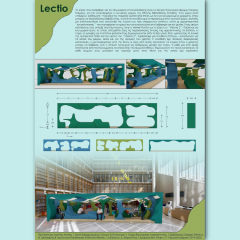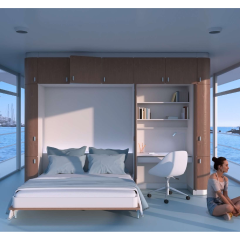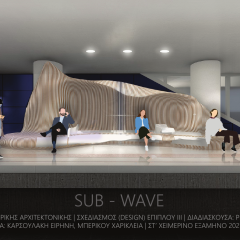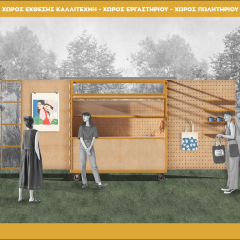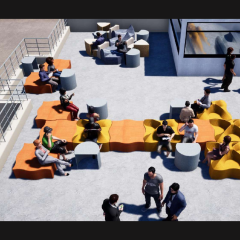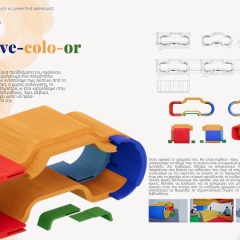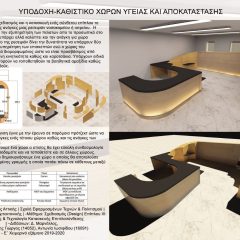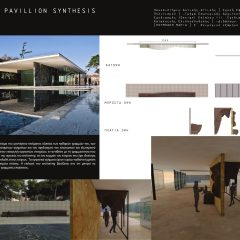General
Provide the necessary skills to resolve design issues of furniture in particular and specific requirements and uses. This is achieved through the analysis of the furniture, user relationship and the specificities and needs of the space. Also with the knowledge of specific uses in places, on ways and methods of design and construction, as well as in materials and construction techniques.
Course content
Represents a specialization course in furniture design and furniture design in the space, giving emphasis to specialized areas (especially buildings as recreation areas, training venues, museums etc). The furniture is simply utilitarian acquires spatial and simultaneously design excellence (design).
Programme aims
The aim of the course is the development of the epistemic content of analysis, study and proposal of furniture in combination with the object of Interior design, in order to support, nurture and develop the ability of students to intervene and to shape furnishings indoors through critique and interpretation.
Learning Outcomes: Knowledge and Understanding
Upon successful completion of the course students will be able to:
Control complex concepts and specialized skills in the field of furniture and space design.
Control complex techniques and technologies analogous to the furniture design process.
They will have specialized knowledge of manufacturing and design methodologies.
They will acquire complex skills in designing and evaluating design ideas in furniture design spatially.
They will conquer creativity in the furniture design process and develop it.
Bibliography
• Banham, R., (1975). Theory and Design in the First Machine Age. London: Architectural Press.
• Brunt, A., (1978). Furniture. Oxford: Phaidon.
• Frey, G., (1970).The Modern Chair: 1850 to Day. Teyfen: Publishers v.
• Gloac, J., (1925). Time, taste and Furniture. London: Grand Richards.
• Greenhalgh, P., (1990). Modernism in design. London: Reaktion Books ltd.
• Hamlin, T., (1952). Forms and Functions of 20th Century. N. York: Columbia University Press.
• Hampries, L., (επιμ.) (1970). Modern Chairs. London: The White Chapel Art Gallery.
• Mc Gregor, N., (2010). A History of the World in 100 Objects. London: Alain Lane.
• Meademore, C., (1974). The Modern Chair. London: Studio Vista.
• Moody, E. (1966) Modern Furniture. London: Studio Vista.
• Oaets, B.R. (1981). Η ιστορία του Επίπλου στη Δύση. Αθήνα: Φόρμα.
• Oliver, J., (1966). The Development and Structure of the Furniture Industry. London: Pergamon.
• Pevsner, N., (1974). Pioneers of Modern Design. Middlesex: Penguin.
• Pevsner, N., (1968). The Sources of Modern Architecture and Design. London: Thames &Hudson.
• Wingler, H., (1969). The Bauhaus. Massachusetts: M.I.T. Press.
• Marnellos, D., Geogiadou, Z., & Frangou, D., (2015). Hotel Furniture in Greek Modernity: “Xenia” and “Amalia”
Hotels cases. Journal of Tourism Research: Volume 10/ Α 2015. Pp. 25-57. ISSN: 2241-7931.


